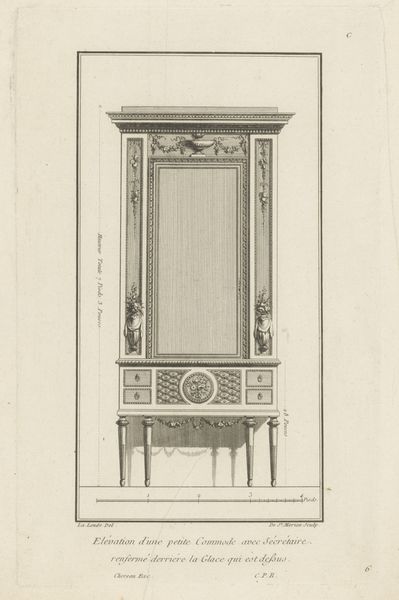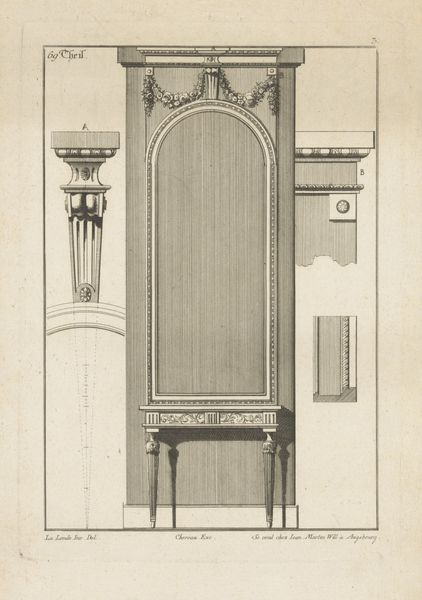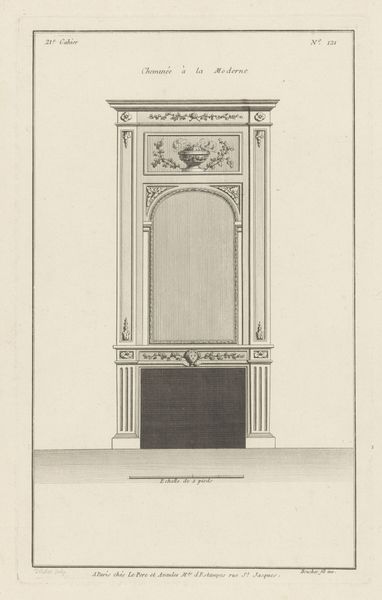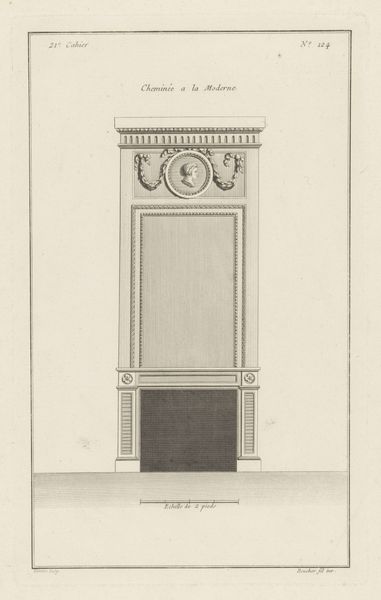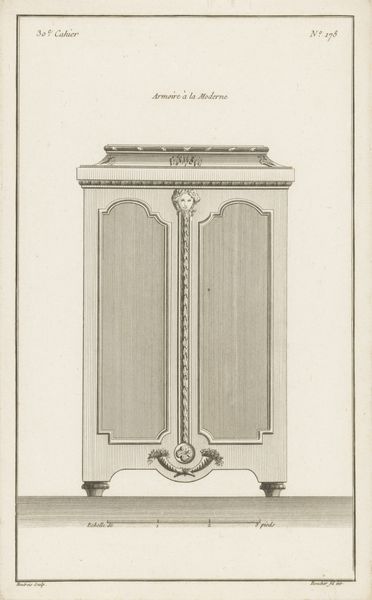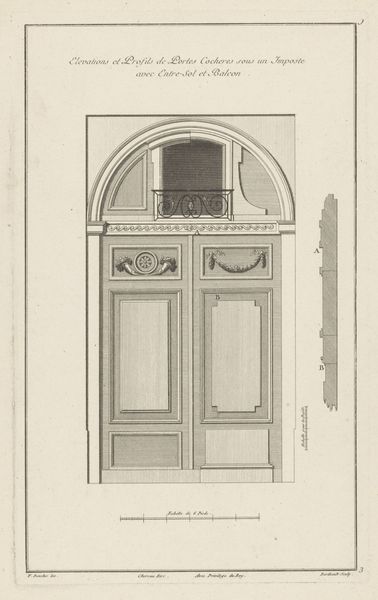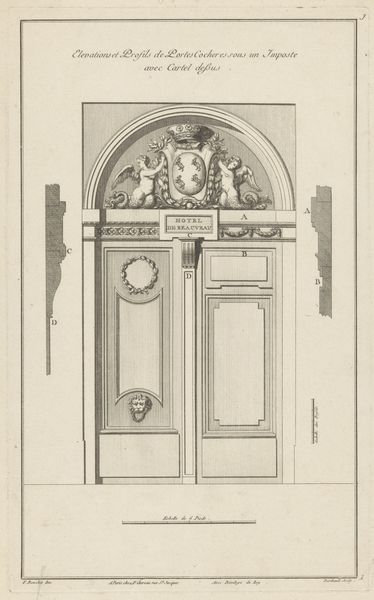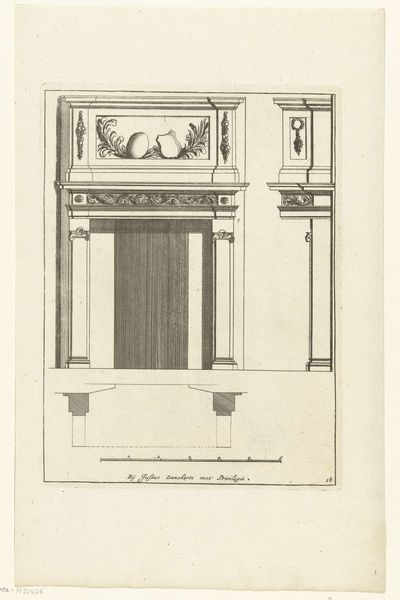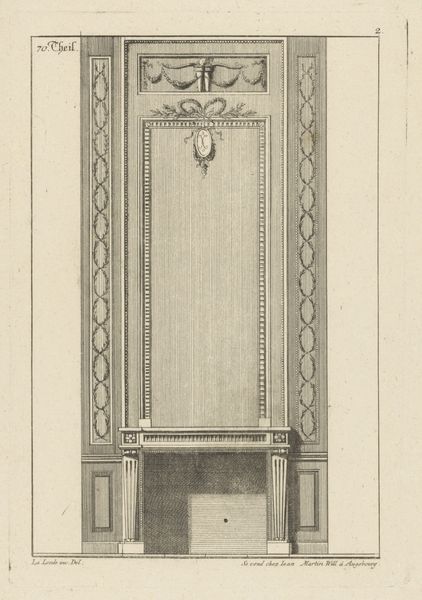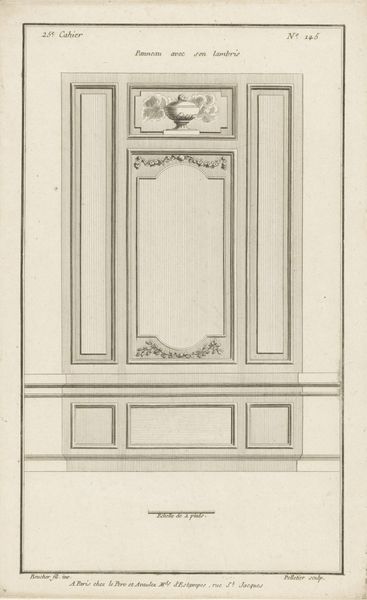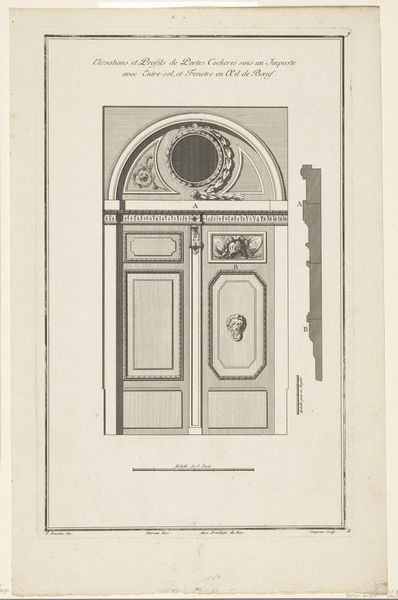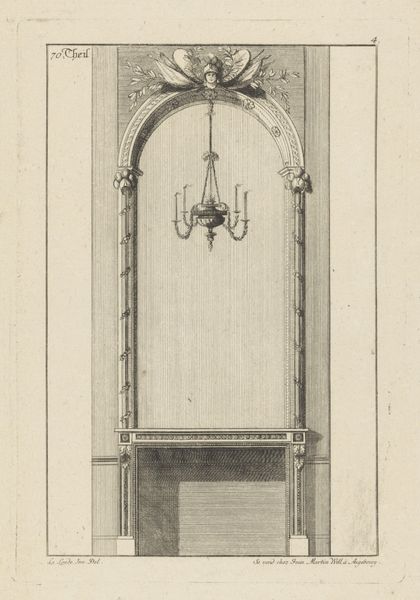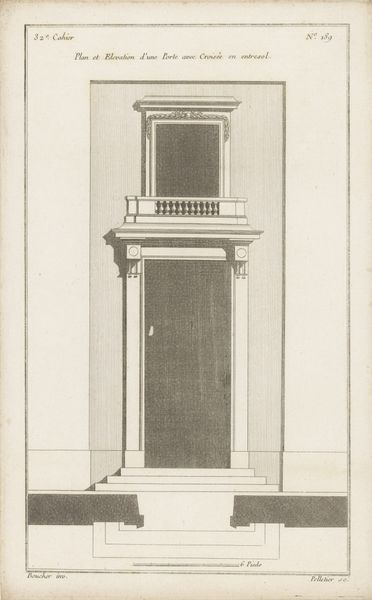
drawing, print, engraving, architecture
#
drawing
#
neoclacissism
# print
#
perspective
#
form
#
geometric
#
line
#
engraving
#
architecture
Dimensions: height 361 mm, width 223 mm
Copyright: Rijks Museum: Open Domain
This print, by Pierre Claude Delagardette, depicts a door design with an oeil-de-boeuf, a small, round window. Although appearing simple, prints like this were crucial in 18th-century architectural practice. Consider the labor involved. Delagardette, trained in perspective and draftsmanship, would have painstakingly rendered this design using precise tools. The printmaking process itself required skill, transferring the design onto a metal plate for reproduction. This wasn't just art; it was a blueprint, a guide for skilled carpenters and masons to create elaborate entrances for wealthy patrons. The design reflects the era's taste for Neoclassical ornament. The oeil-de-boeuf itself is framed by a garland and sculpted head, details that demanded mastery from the artisans who would execute the design. Prints like this circulated knowledge and taste, driving a cycle of production, consumption, and aspiration. It reminds us that even seemingly straightforward images are deeply connected to social status, skilled labor, and the material culture of their time.
Comments
No comments
Be the first to comment and join the conversation on the ultimate creative platform.
